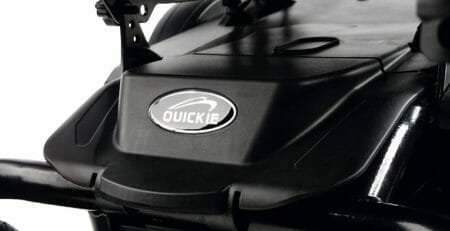Maneuverability factors of the manual wheelchair
The maneuverability of the manual wheelchair is affected by elements relating to the user, like its weight, and to the wheelchair, like the material the frame is made of. There are also a number of other variables, such as friction, which affect stamina, posture and, of course, mobility and maneuverability.
Biomechanical factors (size and position of the wheels, distance and angle between the axles) and other variables related to use must then be taken into consideration.
Taking into account all these parameters it is possible to choose the manual wheelchair best suited to your needs.
The right wheelchair is one that combines optimal functionality, mobility and comfort. A dysfunctional wheelchair, in addition to being uncomfortable, can cause you to slide, tilt or cause unnatural posture which could lead to long-term problems. It is the wheelchair that has to adapt to the needs of the user, not the other way around.
Four main factors are involved in assessing the mobility of a wheelchair:
1.Weight distribution on the wheels
2. Center of gravity
3. Terrain of use
4.Technical aspects such as dimensions, materials, type of wheels, etc.
1. The distribution of weight on the wheels
It refers to the proportion of division between the front and rear wheels. If the weight is placed more on the front wheels, the greater the friction, and consequently the greater the effort required to move the wheelchair, even if it will be more stable.
A distribution with 50% on the rear and 50% on the front (typical of geriatric wheelchairs) guarantees greater stability, but also requires more effort to move, and is therefore more suitable when the wheelchair is pushed by another person. A distribution weighing 80% on the rear wheels and 20% on the front ones will provide greater mobility. It is therefore suitable for users with sufficient arm strength.

2. Center of gravity
Moving the wheelchair's center of gravity allows you to fine-tune the weight distribution. Le light wheelchairs in aluminum they are adjusted by moving the rear wheels forward, backward, up and down. Moving the center of gravity back and up increases the weight on the rear wheels, resulting in more mobility but less stability. It is advisable to adjust the wheelchair's center of gravity according to the user's needs.
3. Land of use
If you think the main use is indoors, or for sports, smaller front wheels are functional, which allow you to quickly change direction. For use outdoors, or on rough terrain, larger front wheels are preferable, which allow greater contact and greater absorption of the roughness of the ground.
4. Technical aspects
Regarding the mobility of the manual wheelchair, the wheels are of great importance.
Those with tyres they are more comfortable and allow greater shock absorption, but cause more friction. Solid wheels, on the other hand, are unsuitable for rough terrain, but facilitate mobility. Regarding the size of the wheels, the smaller ones produce less friction, at the expense of stability.
It is therefore necessary to have in mind the surface on which the wheelchair will be used the most, in order to choose the most suitable size and material.
The softer the ground, the greater the friction and therefore the momentum needed to move the wheelchair.
The distance between the front wheels and hindquarters greatly influence mobility and stability. The shorter the distance, the greater the maneuverability and the ability to turn, but at the price of less stability.




